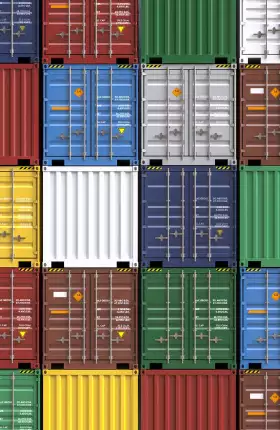Joe Biden left office as the US vice president slightly less than four years ago, but the international trade landscape has changed radically in that short time. Trade frictions between the US and China have pushed the world’s two largest economies onto a path toward decoupling. The US’s trade relations with some of its strongest traditional allies are tense. The government has renegotiated some existing trade agreements while abandoning the pursuit of others. The authority of the World Trade Organization (WTO) has weakened. All of this has occurred in the context of surging economic nationalism around the world.
What will US trade policy look like under President Biden? Statements from his campaign and insights from people familiar with his thinking suggest that the US under Biden is unlikely to fully return to the global free-trade agenda that characterized US policy for much of the post-World War II era. We expect his administration to try to use trade policy to more effectively promote and defend US economic interests, while reasserting the nation’s leadership role in the global trading system.
Biden has signaled that his administration, unlike his predecessor’s, will seek to advance its trade agenda through collaboration with others, wherever possible, rather than unilaterally. And the US will rely more heavily on tools such as tax incentives, subsidies, and government purchasing—rather than high tariffs—in its efforts to bring factory jobs and supply chains back to the US.
Biden administration trade policy will largely be shaped by a balancing of three major objectives: to boost US manufacturing competitiveness and ease the nation’s reliance on imports for critical products; to restore global US leadership by rebuilding alliances and working through multilateral institutions; and to take strong action on US climate change, without putting domestic industries at a competitive disadvantage. (See the exhibit.)
The shift in trade policy approach will have significant implications for business. Companies should strengthen their supply chains’ resilience and gain an understanding of their carbon footprints. And they should expect US policymakers to intervene more actively, especially in sectors regarded as essential to public health and involving next-generation technology.
Don’t Expect Dramatic Change in Policy
The Biden campaign made clear that the US economy is the president-elect’s top priority. The incoming administration is keenly aware that public opinion in the US—as in much of the rest of the world—has shifted toward economic nationalism, one of the megatrends reshaping the global economy that the new BCG book Beyond Great describes.
President Donald Trump’s ability to tap into anger over the offshoring of US manufacturing jobs—particularly to China and Mexico—helped propel him to victory in 2016. Once in office, he erected trade barriers to restrict China’s access to the US market, renegotiated the North America Free Trade Agreement, pulled the US out of the 12-nation Trans-Pacific Partnership, and imposed high tariffs on steel and aluminum imports from virtually all US trading partners.
The Biden administration may be open to modifying some of Trump’s trade actions, such as the “phase one” agreement with China reached in January 2020 and the tariffs on EU and Canadian steel, if the US can obtain something significant in return. It is likely also to continue negotiations on bilateral agreements, such as with the UK. But new trade pacts won’t be an urgent priority. Indeed, the Biden campaign has made clear that the incoming administration “won’t enter into any new trade agreements until we’ve made major investments here at home,” including in education, infrastructure, and manufacturing.
A Return to Working Together
President-elect Biden has explicitly repudiated what he calls President Trump’s “America alone” approach to resolving international challenges ranging from climate change and public health to regional security.
For that reason, we can expect the US to return to supporting the rules-based system for international trade. The US under President Biden will likely fight aggressively through a revitalized WTO—under new leadership—to resolve trade disputes and help forge consensus on emerging issues such as digital and services trade.
Of course, the US will have to work within those rules itself. The Biden administration will try to build coalitions of like-minded countries to tackle complex issues such as technology trade with China, taxation of digital platforms, and government support of state-owned enterprises.
A Focus on Making It in America
President-elect Biden has made the reshoring of manufacturing a major facet of his campaign pledge to “build back better.” In particular, he has targeted easing US dependence on imports—particularly from China—of products deemed critical to responding to a public health crisis, such as drugs and medical devices. His administration is also likely to focus on next-generation high-tech products such as semiconductors, electric vehicle batteries, and 5G telecommunications network equipment. During the campaign, Biden pledged to “use the full power of the federal government to rebuild US domestic manufacturing capacity of our supply chains for critical products.”
Although the Biden campaign has provided few specifics, his administration is likely to continue the Trump administration’s policy of restricting sales of semiconductors and other advanced technologies to Chinese entities, as well as limiting imports of high-tech goods from China. But in general, his campaign has emphasized the use of tools other than trade policy to strengthen US leadership in strategic sectors.
His administration probably will use financial incentives and tax code changes to discourage offshoring and to bolster production within the US or closer to its borders. In addition, Biden has pledged to use the Defense Production Act—which gives the president broad authority to mobilize domestic industry for emergency preparedness—“to its fullest extent to rebuild domestic manufacturing in critical supply chains.” Biden has also said that he will use the federal government’s purchasing power to strengthen US supply chains of critical products.
The Trade Implications of Biden’s Climate Agenda
The Biden team has made clear that it intends to resume US global leadership in the fight against climate change. This will include reversing the Trump administration’s decision to leave the Paris Agreement and stepping up action to reduce US emissions of carbon dioxide.
Meeting challenging Paris Agreement greenhouse-gas emissions targets will have implications for trade policy, however. The Biden administration will have to introduce domestic measures of some kind to encourage US industries to reduce their carbon footprint. It will also have to take measures to ensure that US carbon-mitigation policies do not put domestic industries at a competitive disadvantage against imports from countries with relatively lax environmental rules and practices. The Biden administration could, for example, consider imposing an import charge on goods whose carbon footprint substantially exceeds that of comparable US-made goods. Other major economies, notably the EU, are planning similar moves.
The Implications for Global Business
For companies that have had to navigate the uncertainty and volatility of US trade policy during the past four years, the impending Biden presidency may look like a return to normality. But the new administration is unlikely to restore the pre-2017 status quo. We recommend that companies take the following approach to preparing for change:
- Work within existing trade agreements. Because new trade agreements won’t be a top US priority, significant reductions in barriers to trade with the US are unlikely in the near term. Consequently, incremental improvements that can occur within the existing terms of trade are far more probable than radical change.
- Review the resilience and competitiveness of supply chains. The Biden administration is very likely to introduce greater financial incentives for reshoring production work—and disincentives for offshoring. Companies should examine the range of supply of global supply-chain models—including regionalization and geographic diversification—to ensure that these are resilient and can mitigate disruptions from such sources as further US-China trade decoupling.
- Understand your carbon footprint. A renewed US focus on climate action means that the cost and reputational impact of emitting CO2 will increase. Companies that are not already doing so must gain a clear understanding of their carbon footprint and of the changes in product design, processes, logistics, and supply chains that are necessary to reduce emissions and carbon costs.
- Focus on strategic sectors. US policymakers and regulators will pay particular attention to maximizing domestic control and production in sectors regarded as strategic, such as high-tech, pharmaceuticals, and health care. Leaders in these sectors must therefore position themselves to be ahead of the game, by understanding the implications of different policy options and building a playbook of potential actions that they can take quickly in response to legislative and regulatory changes.
- Work to influence policy decisions. Companies should express their concerns to policymakers about existing trade policies that adversely affect their businesses and industries, and they should seek to influence new policy decisions, supporting their arguments with a compelling fact base.
Significant change is coming to US trade policy—if not entirely in substance, then certainly in strategic direction. There is little momentum in favor of returning to the freewheeling, pro-globalization attitude toward international trade of the old Washington consensus of the 1990s and early 2000s. Instead, change will occur within the context of an increasingly complex and multipolar world. To thrive in this new era, business leaders must focus on making their organizations more agile, focused, digital, environmentally responsible, and resilient.







